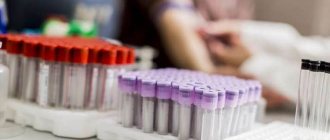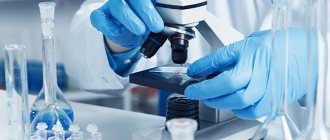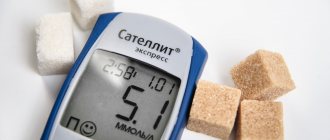Pyelonephritis
Diabetes
Hepatitis
Rheumatism
50151 October 27
IMPORTANT!
The information in this section cannot be used for self-diagnosis and self-treatment.
In case of pain or other exacerbation of the disease, diagnostic tests should be prescribed only by the attending physician. To make a diagnosis and properly prescribe treatment, you should contact your doctor. We remind you that independent interpretation of the results is unacceptable; the information below is for reference only.
Urea in the blood: indications for prescription, rules for preparing for the test, interpretation of the results and normal indicators.
What is urea
Urea is a product that is formed in the liver as a result of the synthesis of ammonia and carbon dioxide. The resulting compound is delivered by blood to the kidneys, where the filtering organ separates it from the general bloodstream and sends it into the urine.
Urea is a product unnecessary by the body, which must be completely eliminated, since its accumulation gives an osmotic effect, which can cause swelling of the internal organs in which it accumulates:
- liver;
- kidney;
- thyroid gland;
- spleen;
- pancreas.
Normally, the final product - urea - should be excreted from the body, but if there are any abnormalities in the functioning of the system, it is detected in the blood.
At what urea levels should you go to the doctor?
Any deviation from normal levels of nitrogen-containing substances in the blood is a reason to consult a doctor. A full consultation can be carried out by a therapist or nephrologist.
A specialized doctor conducts a full examination of the patient, finds out the presence of complaints, and studies the results of previous studies. For the purpose of clarification, additional tests and hardware diagnostics may be prescribed. The data from all examinations make it possible to establish the root cause of biochemical disturbances in the blood formula, a disorder in the mechanism of breakdown of nitrogenous substances and subsequent removal from the body through the excretory system.
What does urea in the blood mean?
Based on the state of the blood, namely the presence of high concentrations of urea in it, one can judge:
- the functioning of the kidneys, which are required to remove waste substances;
- about the function of the liver, which synthesizes urea from ammonia;
- about the health of muscle tissue, since the breakdown of protein in the muscles also produces urea.
Indications for testing may include:
- cardiac ischemia;
- rheumatoid arthritis;
- systemic scleroderma;
- liver diseases;
- screening results that do not fit within the normal range;
- suspected kidney infections;
- preparation for drug therapy;
- studies before hospitalization;
- assessment of the dialysis procedure performed.
Most often, an increase in urea indicates chronic or acute kidney disease. Separately, a comparative analysis is carried out for the urea content in urine and blood. If the level of the substance in the urine is lower than what is found in the blood, they speak of a disease of the filtration system - renal failure.
MEDSI cares about its patients
- Comfortable conditions for taking the test.
You can complete the study throughout the day. The results will be available in your personal account - Modern laboratory equipment.
It corresponds to a high European and global level. The laboratory uses equipment from leading manufacturers such as Beckman Coulter, Siemens, Ortho Clinical Diagnostics, Thermo Fisher, Sysmex, BD - The shortest processing time for materials.
They are provided with modern equipment and experienced specialists - Experienced specialists.
They professionally take biological material and examine it, which guarantees diagnostic accuracy - Regular maintenance of equipment and automation of research processes.
All analytical installations are serviced and meet quality standards. All processes are fully automated and built in accordance with LEAN management - Automation of the process of sorting biomaterials.
Preliminary identification of the biomaterial is carried out in front of the patient. Eliminates the possibility of losing the test tube - Opportunity to undergo a comprehensive examination.
If necessary, you can take all the necessary tests
To take a urea test and clarify its cost, as well as to make an appointment with a doctor to interpret the result, call +7 (495) 7-800-500. A MEDSI specialist will answer all questions and suggest the optimal time to visit the clinic. Recording is also possible through the SmartMed application.
Why might urea be elevated?
To determine the level of urea in the blood, a laboratory method called a biochemical blood test is used. It involves taking material from a vein. For each age category of patients there is its own norm for urea content in the blood:
- in newborns from 1.7 to 5;
- in children of the first year of life from 1.4 to 5.4;
- from one to 15 years old can have 1.8-6.7;
- women over 18 years old - from 2 to 6.7;
- men over 18 years old - from 2.8 to 8.
Several factors influence the urea content. One of which is the level of amino acids in the body, since ammonia is formed from them during metabolism, which becomes one of the components of urea. On the other hand, with a sufficient amount of amino acids, the diseased liver will not be able to synthesize urea, which will be the reason for the detection of its negligible amount. The third important factor is the performance of the kidneys, which must, by filtering the blood, extract urea from it and send it out of the body with urine.
If we exclude all possible pathologies, then we can say that the following factors not related to the disease can increase the level of urea in the blood:
- on the eve of the collection of material, severe emotional stress was experienced;
- the patient had to buy and take a drug from the list: Tetracycline, Euthyrox, Neomycin, Lasix, any drug from the group of corticosteroids or sulfonamides, anabolic steroids, steroids, salicylates;
- the patient fasted for a long time or, on the contrary, ate a lot of protein foods;
- the patient on the eve of the delivery of the material or daily subjected the body to heavy physical activity.
When a doctor tries to determine the quality of kidney function, the presence of urea in the blood may indicate:
- blockage of the urinary ducts;
- chronic. renal failure;
- glomerulonephritis;
- pyelonephritis;
- dehydration, which could be preceded by myocardial infarction, shock or heart failure.
Separately, we should highlight the reasons why urea is formed in the human body in huge quantities:
- prostate neoplasms;
- burn disease;
- severe intestinal infections;
- hematological diseases;
- state of shock.
To accurately determine the patient’s condition, it is necessary to conduct several laboratory tests in a row to see the picture in dynamics; in addition, it is necessary to measure the amount of urea in the urine in order to be able to compare this indicator with blood data.
How to normalize indicators
The normal level of urea in the blood depends on gender and age; it is not an independent indicator. Deviations, especially in favor of an increase, indicate the presence of a disease. For this reason, normalization of high rates is only possible with treatment of the underlying disease.
If high levels appear in the blood due to poor nutrition, you need to limit the consumption of proteins in food.
Low levels can be normalized, on the contrary, by including meat and protein products in the diet. However, this is only possible if low urea is the result of diet. If the reason lies elsewhere, you need to undergo additional diagnostics and identify the disease that affects your blood counts.
Also beware of self-treatment with traditional medicine. There are a lot of advertisements on the Internet for various teas and infusions, tablets and pills, but it is not recommended to take them without a doctor’s permission. All these drugs have a number of side effects and contraindications, and not all advertised drugs are effective. Remember, there are a lot of scammers online, so you need to buy drugs from trusted pharmacies and only with a doctor’s prescription.
Urea in the blood is not the only blood indicator that can indicate a particular disease. For this reason, for an accurate diagnosis, it is necessary to evaluate all parameters of the biochemical analysis. Each person must take care of his own health. Tests must be taken regularly and at the same time lead a healthy lifestyle. If you treat all infections on time, exercise and eat right, your blood will delight you with its indicators.
Symptoms indicating increased urea
Based on his feelings, the patient himself can often tell that the level of urea in the blood may be elevated. This is primarily indicated by pain in the lower back in both men and women. It indicates kidney disease.
Separately distinguished:
- swelling;
- increased amount of urine produced;
- scanty urine production;
- the presence of protein in the urine.
However, indications for donating blood for urea may be:
- ischemic diseases;
- hepatitis;
- cirrhosis;
- decreased absorption of foods;
- connective tissue diseases.
The level of urea indicates several possible pathologies at once, so this analysis is often used to monitor the patient’s condition.
Indications for the study
A blood test for urea is prescribed if the doctor suspects that the patient has kidney or liver pathologies. It is also used to monitor the progress of treatment for such diseases. The test can be administered to patients of any age, including newborns. Kidney problems can be suspected if the patient complains of swelling, sleep disturbances, weakness, decreased appetite or diuresis, pain in the lumbar region, or high blood pressure.
If indicated, the test is usually prescribed independently. In some cases, it is included in a set of studies to obtain the most complete assessment of the patient’s condition.
How to take a urea test correctly
You need to prepare for the analysis so as not to receive distorted data. First of all, you need to remember that blood is donated strictly on an empty stomach. In addition, since urea production is affected by the breakdown of muscle fibers, it is important to avoid physical activity on the eve of the test. If you can’t get to the laboratory without excessive physical activity, you need to arrive at the door of the office no later than half an hour before the appointed time in order to have time to calm down and put your nervous system in order.
If the patient is taking any medications, it is better to postpone the morning dose until the blood has already been donated. Immediately before the donation, you should not do massages, biopsies, or x-rays, especially those using contrast.
What is the function of urea
Urea is a natural, essential moisturizer that is not only suitable for humans, but is also a natural component of the human body. It is able to draw moisture from the deep layers of the skin and move it closer to the upper layer of the epidermis. As a result, the appearance improves.
The high hygroscopicity of this component is capable of binding water molecules to each other, which prevents the evaporation of moisture from the surface of the epidermis. Urea also exfoliates dead skin cells, which promotes skin regeneration and healing.
Instagram content
View on Instagram
Reasons for low uric acid
Low uric acid levels can result from a low-purine diet. However, doctors often associate this deviation with the presence of one of the following diseases:
- Konovalov-Wilson pathology.
- Fanconi pathology.
- Hodgkin's pathology.
- Pathologies of the kidney tubules.
Uric acid in the blood also decreases during pregnancy. In addition, this deviation is typical for patients with extensive burns, tumor diseases, congenital liver pathologies, and when taking certain medications. If this deviation is detected, the patient is prescribed a series of diagnostic procedures to identify the true cause of low uric acid levels.
Treatment methods
Treatment methods are correlated with the underlying cause:
- for liver pathology - hepatoprotectors: Karsil, Essentiale;
- for kidney pathology - symptomatic treatment under the supervision of a nephrologist;
- in case of dehydration - restoration of the normal volume of circulating blood and electrolytes;
- postoperative complications resolve over time;
- changes in hormonal levels are corrected independently for physiological reasons or with special drugs that relieve the pathology of the relevant organs;
- protein deficiency can be corrected by changing the diet (butter, meat, eggs);
- intoxication of a specific origin - by quitting smoking and alcohol.
Normalization of the level of this nitrogen-containing substance is achieved with medications and methods of artificially purifying the blood of toxins. Sorbents that remove toxins reduce the concentration of urea in the blood serum: Polysorb (240 rubles), Atoxil (150 rubles), Enterosgel paste (230 rubles), Silix (190 rubles). These drugs are effective in the initial stages of pathology of the liver, kidneys, and gastrointestinal tract. At the stage of uremia, chronic renal failure, hardware methods are needed: hemodialysis on an artificial kidney machine in the nephrology department or dialysis center.
The blood purification procedure is carried out by highly qualified specialists. The patient is placed on a special chair, and a medical device is connected to his blood supply system, which removes urea and other toxins using a bicarbonate or acetate solution. The procedure is performed under sterile conditions with disposable consumables.
Diagnostics
Both substances under consideration belong to the group of residual nitrogen compounds. Their concentration in the blood is determined during biochemical analysis. In this case, urea on average makes up 45% of the total residual nitrogen, and uric acid only about 20%. In addition to these indicators, experts also evaluate the content of other substances belonging to the group of residual nitrogen, including creatinine, amino acids, ammonium, creatine, etc.
In total, this fraction includes more than 15 substances, but these are the most significant for diagnosis.
In order for the analysis of residual nitrogen components to be as accurate as possible, you need to follow the basic rules for donating blood. The most important of them is taking the test on an empty stomach. It is also necessary to avoid taking alcohol and any medications a few days before the test.
Only a specialist should decipher the analysis. Only a doctor will be able to correctly evaluate the results of your analysis and make a preliminary diagnosis, which will later be confirmed or refuted by additional diagnostics. Quantitative determination of the components of residual nitrogen is not a means of accurate diagnosis, but is only a reason to suspect a disease.
Uric acid
Uric acid is a product of purine metabolism. In fact, it is a concentrate of sodium salts, which is very dangerous for our health. In a healthy body, this substance is excreted in urine and feces, but in the presence of certain diseases, uric acid begins to accumulate in the blood and salt crystals settle on joints, bones and muscles. Penetrating into various organs and tissues, these salts disrupt their functioning, thereby causing the development of serious diseases. When diagnosing kidney disease, uric acid levels are not considered.
Prevention
Prevention of deviations of substances in the residual nitrogen fraction consists primarily of maintaining a healthy lifestyle. If we look at the statistics, we can see that initially deviations develop against the background of poor nutrition and a sedentary lifestyle. The situation is further aggravated by weak immunity and the emergence of chronic diseases.
It is especially important to monitor urea and uric acid levels in children. Deviations in these indicators can result in the development of severe and intractable pathologies for them. It is for this reason that children need to have blood biochemistry done at least once a year.
Every person should understand that any blood component is an indicator of the health of internal organs and systems. Never neglect donating blood for analysis, because it is this substance of our body that first of all reacts to the presence of a disease. In this case, indicators deviate even before the appearance of symptoms of the disease. Monitoring the level of urea and uric acid will allow you to promptly identify abnormalities and receive adequate treatment before dangerous pathologies develop.
Change in urea level if there is only one kidney
After the removal of one kidney, the volume of the second increases over the course of several weeks. This process is commonly called compensatory hypertrophy. Glomerular filtration in a single kidney is reduced by 50%.
Under normal conditions, one unit can ensure the stability of the composition of the internal environment. In people who have undergone nephrectomy and live with one kidney, there is a decrease in glomerular filtration rate, and as a result, an increase in urea levels to 10 mmol/l.
An excess of urea concentration is typical for the postoperative period, and in a favorable scenario, this indicator decreases to normal values.










